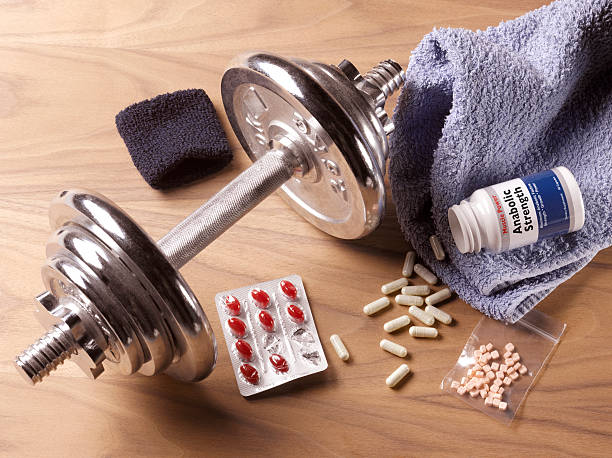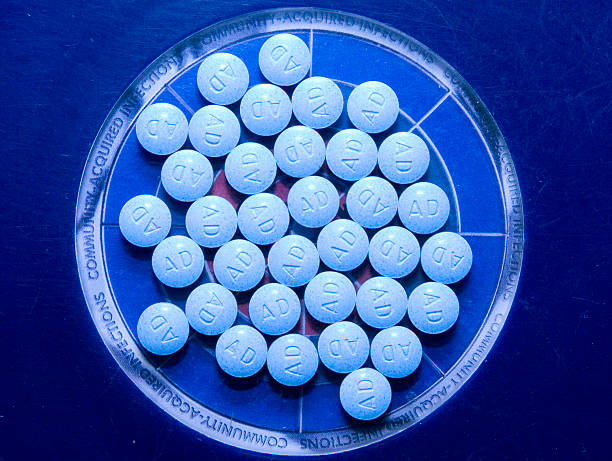
Anabolic-androgenic steroids (AAS) are synthetic substances that copy the effects of testosterone. They combine both anabolic effects (promoting muscle growth and strength) and androgenic effects (developing male characteristics). Initially, these steroids were for medical purposes, to treat conditions like delayed puberty, muscle loss due to diseases such as cancer, and hypogonadism, which is a condition where the body doesn’t produce enough testosterone. But a new phenemenon began to give way, leading to the rise of the steroids vs. natural approach debate.
The use of steroids in sports began in the mid-20th century. The most notable early usage was during the 1954 World Weightlifting Championships, where Soviet athletes demonstrated significant superiority, which many attributed to their use of testosterone injections. This marked the beginning of widespread steroid use in competitive sports, particularly in strength and speed-based disciplines.
During the 1970s and 1980s, steroid use was rampant across many sports, both at professional and amateur levels. Countries like the German Democratic Republic (East Germany) even implemented state-sponsored doping programs to excel in international competitions. However, the adverse health effects and the unfair advantage provided by these substances led to increased scrutiny and regulation.
Today, the use of AAS in sports is banned by most major sporting bodies, including the International Olympic Committee (IOC) and the World Anti-Doping Agency (WADA). Despite this, AAS use remains a significant issue in sports, driven by the ongoing desire of athletes to gain competitive advantages. Modern doping has evolved to include sophisticated methods, such as gene doping. These are harder to detect and continue to challenge regulatory efforts.
Why are steroids so appealing?
Athletes often face immense pressure to perform at peak levels, which can tempt them to use steroids despite known risks. Steroids can significantly enhance muscle mass, strength, and recovery speed, which are critical attributes in competitive sports. This desire for quick improvements in performance and physical appearance can make steroids appealing.
Steroids vs. natural performance enhancement is a serious debate. Naturally, athletes pursue intense training and diet, but steroids promise faster and more pronounced results by chemically enhancing the body’s ability to build muscle and recover. This can be particularly relevant in sports where physical strength and stamina are directly correlated with success.
However, the use of steroids comes with substantial health risks. These include hormonal imbalances and potential organ damage. This is in contrast to natural methods, which are slower but far safer. Societal standards that glorify muscular physiques can drive both men and women on steroids to fit or excel within these norms.
In terms of physical transformations, before and after the use of steroids can show dramatic changes in body composition. These can be motivating to those seeking rapid improvements. However, these transformations come with the caveat of potential long-term health consequences.
Legal and ethical considerations of steroids in professional sports
Penalties for doping in sports can be severe, aiming to deter the use of performance-enhancing drugs. Athletes may face suspensions from competitions or even lifetime bans for repeated offences. For instance, penalties under the WADA code can include suspension from competition for two years for a first violation.
The use of steroids and other performance-enhancing drugs in sports also raise serious ethical issues within the “steroids vs. natural” debate, primarily around the concept of fair play. Using these substances can give athletes an unfair advantage, undermining the integrity of the sport. This affects the competition itself but also the well-being of the athletes, who may face serious side effects such as hormonal imbalances and liver damage.
The public’s perception of sports can also be negatively affected by widespread doping scandals. Moreover, the specific impact on women is notable. This is because the steroids can potentially change physical appearance and cause deeper voice and increased body hair. This can ultimately stigmatise female athletes.
Physical health risks of steroid use as opposed to natural approach
When approaching the steroids vs. natural debate, it’s important to consider the risks. These risks include:
1. Liver damage: Steroid use can lead to serious liver conditions such as liver tumours and peliosis hepatis, a condition where blood-filled cysts form within the liver. Both of these conditions can be life-threatening.
2. Cardiovascular problems: Anabolic steroids can exacerbate heart and blood vessel diseases by increasing bad cholesterol (LDL) levels and decreasing good cholesterol (HDL) levels. This can lead to an increased risk of heart attack and stroke.
3. Hormonal imbalance: In men, steroids can cause testicular atrophy, reduced sperm count, and breast enlargement (gynecomastia). Women may experience changes such as a deeper voice, menstrual irregularities, and an enlarged clitoris. These changes may be irreversible.
4. Severe acne and hair loss: Steroid use can significantly alter skin condition, leading to severe acne. Additionally, it can cause both men and women to experience hair loss.
5. Psychological effects: Users may experience mood swings, increased aggression, and other mental health issues like depression.
6. Combined use with alcohol: The combination of steroids and alcohol is another critical concern. Alcohol can worsen the side effects of steroids, complicating health risks and potentially leading to dangerous interactions.
7. Other risks: Using needles to inject steroids can increase the risk of contracting infectious diseases like HIV and hepatitis if the equipment is shared.
These health risks highlight the dangers associated with the non-medical use of steroids. They stress the importance of avoiding such drugs unless prescribed by a healthcare provider for legitimate medical conditions.
Psychological and social impacts of steroid use
Anabolic steroids significantly affect the psychological state of users, leading to symptoms and behaviours that can impact both personal relationships and professional life. One of the most notorious effects is “roid rage,” a term that describes sudden and extreme aggression and irritability attributed to steroid use. This heightened aggression can lead to violent outbursts, severely straining interpersonal relationships and potentially causing professional setbacks.
Mood swings are also a psychological effect of steroids. Users may experience rapid shifts in mood, from euphoria to deep depression, which can be unpredictable and difficult for both the user and their loved ones to manage. These mood swings, combined with aggression, can make social interactions and maintaining relationships challenging.
Dependency on anabolic steroids is also a serious concern. About 32% of individuals who misuse steroids develop a dependence.
Withdrawal symptoms can occur when a user stops taking steroids, further complicating attempts to quit. These symptoms are largely due to the hormonal imbalances caused by prolonged steroid use and can include depression, restlessness, fatigue, and a significant decrease in the sense of well-being. Withdrawal can be severe enough to hinder daily activities and may necessitate medical intervention to manage both physical and psychological effects.
Steroids vs. natural? Impact on amateur athletes and youth
Among the most concerning risks for adolescent and young amateur athletes is stunted growth. Anabolic steroids can cause premature closure of growth plates in bones, which can prevent adolescents from reaching their full adult height. Additionally, steroid use is linked to severe acne, liver damage, and increased risk of heart disease and strokes. These risks are heightened in adolescents whose bodies are still developing.
For amateur athletes, the temptation of enhanced performance can be powerful, but the consequences of steroid use go far beyond immediate physical effects. The use of these substances can lead to sanctions, including bans from sporting events, which can tarnish an athlete’s reputation and impact their sporting career and personal life.
Through detailed, relatable education and robust support systems, we at InnerLife Recovery aim to create an environment where good health is prioritised, ensuring the well-being and integrity of individuals and athletes across all disciplines.

